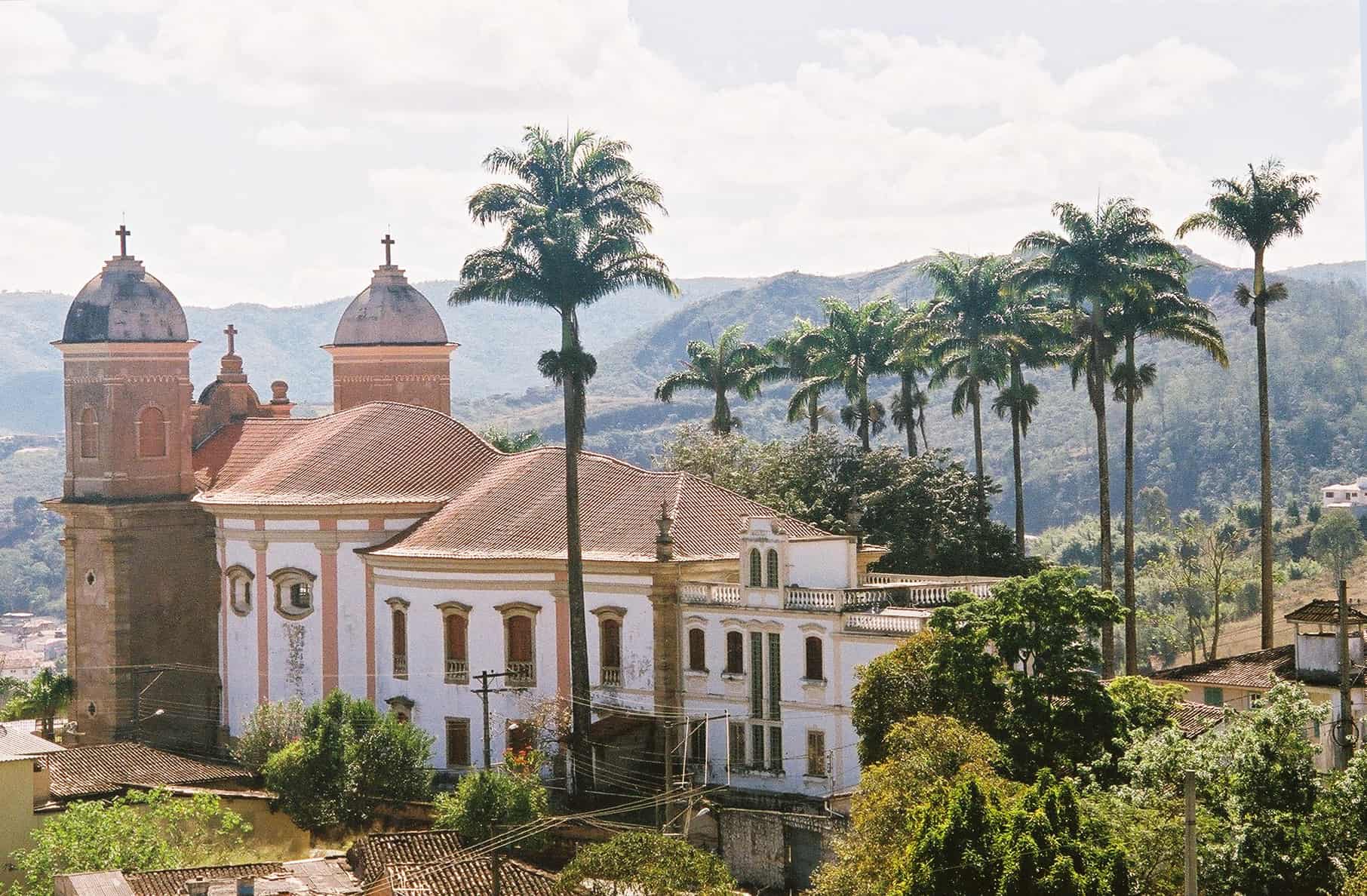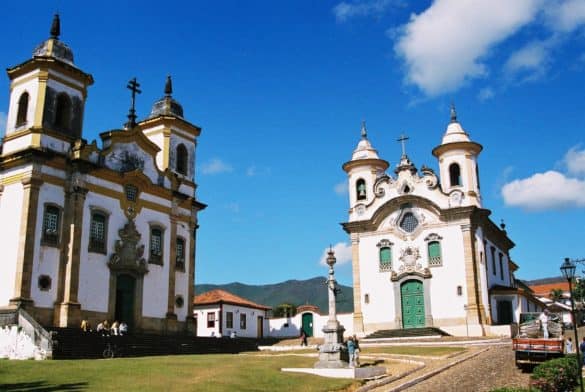If the historic cities in Brazil’s baroque heartland aren’t on your bucket list, they should be. Bernard O’Shea ventures into gold rush territory in Minas Gerais.
Away from the glitz and excitement of Rio de Janeiro and the buzz and bright lights of Sao Paulo, away from the massive green sweep of the Amazon rainforest, there is another Brazil that needs to be experienced. A Brazil that is wildly different and yet no less beautiful and enchanting.
I’m talking about the baroque heartland, the historic semi-rural relic of Brazil’s golden age, the 18th century gold rush that brought fabulous riches to some, heartache and despair to many. It’s a land of stunning colonial architecture, of mountains and hills, of rivers and streams and waterfalls, of sunny blue daytime skies and twinkling stars at night.
To see it, you have to go Minas Gerais, a massive state that borders the states of Rio de Janeiro and Sao Paulo, among others. It’s not all sleepy and dated; the modern state capital Belo Horizonte (which means “beautiful horizon”) is the third-largest city in the country – the greater urban area houses a population of 5.5 million – and it has all the vibrancy that you’d expect of a modern metropolis. It’s well worth a couple of days’ exploration at least, but the real attractions are the state’s marvellous colonial outposts, and you should give yourself a week at least to take them all in.
Plan your route
Most of the sights are south of Belo Horizonte. Head first to Ouro Preto and nearby Mariana, then continue south to to Conghonas do Campo (a day visit should suffice) and on to Tiradentes and São João del Rei. The latter is only about 330 kilometres from Rio de Janeiro, so you could do all these on a Belo Horizonte-Rio de Janeiro trip if you wanted. However, about 300km north of Belo Horizonte is another great colonial town, Diamantina. It may seem tempting to skip it, but if you were to do so you would miss out on some of the most exquisite natural scenery in Minas Gerais, such as the waterfall-rich nearby Biribiri state park and the rugged Serra do Cipó national park. So, let the journey begin.
Ouro Preto and Mariana

The Basilica de Sao Pedro dos Clerigos, Mariana’s only hilltop church.
Just 12 kilometres separates these two beautiful baroque cities, both former capitals of Minas Gerais, and between them they boast a wealth of well-preserved colonial architecture. Set in the hills, their quaint buildings with their typically speckled red tile roofs and whitewashed walls contrast with the lush greens of the countryside.
It was the discovery of ouro preto or “black gold” (the colour being due to the high concentration of iron oxide in the soil) that started the gold rush fever in Brazil in the 18th century, and over the next 100 years 1200 tons of gold (80 per cent of world production at the time) and 3 million carats of diamonds would be mined in the region. Much of the wealth was splashed lavishly on splendid buildings, notably churches, and the most gifted craftsmen of the day were hired to construct and embellish them.
In this part of Brazil you will come across the works of two great artists in particular, painter Manuel da Costa Ataíde, and architect and sculptor Antônio Francisco Lisboa (1730s-1814), better known as O Aleijadinho (“the little cripple”). Aleijadinho suffered terribly from illness, possibly leprosy – he lost his fingers and became so disfigured that his hammer, chisel and other work tools had to be strapped to his hands. He lived the life of a recluse, being so ashamed of his deformities that on the rare occasions he ventured outside in daylight, he demanded to be cloaked and hidden. A tour of the colonial gems of Minas Gerais is pretty much a tour of the workshop of these two great artists. Aleijadinho designed and built many of them, Ataíde painted the ceilings.
Ouro Preto is the livelier and bigger of the two cities (it has a population of about 70,000 compared with Mariana’s 58,000) and has some excellent museums, a university and good restaurants, hotels and other facilities for visitors. It’s very hilly and needs time to explore. The interiors of the churches are well worth seeing, notably the Igreja de São Francisco de Assis (the work of Aleijadinho and Ataíde), the lavish Matriz de Nossa Senhora do Pilar (largely the work of sculptor Francisco Xavier de Brito), and the Matriz de Nossa Senhora da Conceicão, built by Aleijadinho’s father, Manuel Francisco Lisboa (both father and son are buried here). The other surrounding churches are less ornate but still worth visiting for their hilltop views.
Mariana is flatter, more compact and easier to explore. The Basilica de São Pedro dos Clérigos stands atop its only hill and is a good vantage point. Its most striking buildings, though are the twin churches of São Francisco de Assis and Nossa Senhora de Carmo, which stand side by side opposite the town hall. Both were both decorated by Ataíde, who is buried in the former. Any pit stop in Mariana should include a stroll through the shady garden square, Praça Gomes Freire.
São João Del Rei
Saint Francis of Assisi is a very popular man in these parts. Just as Ouro Preto and Mariana have churches named after him, so does São João del Rei. As far as the exterior goes, the Igreja de São Francisco de Assis here is probably the most impressive church of them all. The original design and concept was by Aleijadinho, but the finishing touches and some modifications were done by Francisco de Lima Cerqueira.
The church is the main drawcard in São João del Rei, which is the largest of the historic colonial cities – unlike the others, it didn’t suffer a decline after the gold boom ended, and nowaday it’s a busy administrative centre with a regional airport. The walk along and over its canal is pleasant, and there are other parts of the town that are well worth exploring, including the streets leading up to the Igreja Nossa Senhora do Carmo (built in 1734).
A popular attraction for day trippers and railway enthusiasts is Museu Ferroviário (Railway Museum) and the old steam train which still runs between São João del Rei and Tiradentes, about 14km away. The line was built in 1880.
Tiradentes

The surrounding hills make a splendid backdrop to Tiradentes. Photo: Pixabay
Set in the foothills of the Serra de São José is one of the most charming villages that you’ll ever see, Tiradentes, which should really be your base for a couple of nights. Although it has a population of only about 6500, it is well geared for tourists and has great restaurants, chic boutiques and a comfortable hotel and pousadas. It’s a wonderful place to stroll around at leisure and is very popular with day trippers or those seeking romantic weekend getaways. It’s quite hilly, and on the highest point is one of the last works of Aleijadinho, the Igreja Matriz de Santo Antônio, which is said to be the most richly gilded church in Minas Gerais.
Congonhas Do Campo

These statues caused a political stir. Photo: Pixabay
It is here in this little town that you will appreciate the artistry of Aleijadinho more than anywhere else, for the complex known as the Basílica do Senhor Bom Jesus de Matosinhos (pictured at the top of this post) houses the most important collection of statues and carvings in Latin America.
The main church at the top of the hill was built in 1771 at the behest of a wealthy diamond miner who had recovered from a near fatal illness. It is modelled on the famous Santuário do Bom Jesus in Braga, Portugal, but fortunately the incline is less steep and there are far fewer steps to climb.
On the parapet and stairwell leading up to the basilica are a dozen soapstone statues of prophets from the Old Testament. These statues are so theatrical that there was a lot of speculation Aleijadinho was doing insulting caricatures of some of the politicians and public officials of the day. The interior of the church, with its beautifully painted ceiling and carved alter, is no less impressive.
Further down the hill are six little chapels (four on the left, two on the right as you go up) with life-size wooden statues depicting episodes from the Passion of Christ – the capture of Christ, Christ carrying the cross, the crucifixion, the Last Supper and so on. The statues here are regarded as Aleijadinho’s masterpieces.
There isn’t really much else to see in Congonhas, but the Basílica is a must-visit place, and if you can get there early in the day before the crowds arrive, even better.
Diamantina
Although it is completely in the opposite direction (about 300km north of Belo Horizonte) than all the other historic towns, it is well worth doing the trek to Diamentina, for in doing so you will immerse yourself in some of the most beautiful countryside in the state. Indeed, some regard this UNESCO World Heritage site as the most striking of the state’s historic cities.
As the name implies, Diamentina was the centre of the diamond trade in the last 1720s. Funnily enough, though, one of its most striking churches is the Igreja de Nossa Senhora do Rosário dos Pretos, built by slaves in 1733 and used primarily by the enslaved black community and the poor. The wealthy attended the plush nearby Nossa Senhora de Carmo. Diamantina is a colourful little town, and the surrounding countryside is stunning, particularly the quaint village of Biribiri about 10km north. There are waterfalls and good swimming spots nearby too. TTW
Bernard O’Shea travelled to Brazil at his own expense. In Minas Gerais he was a guest of the state government. More information: minasgerais.com.br. Photos © Bernard O’Shea.




